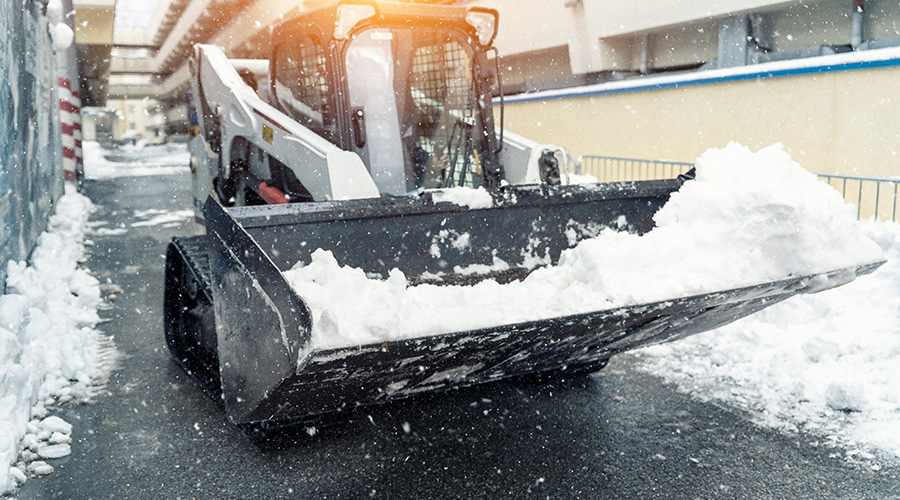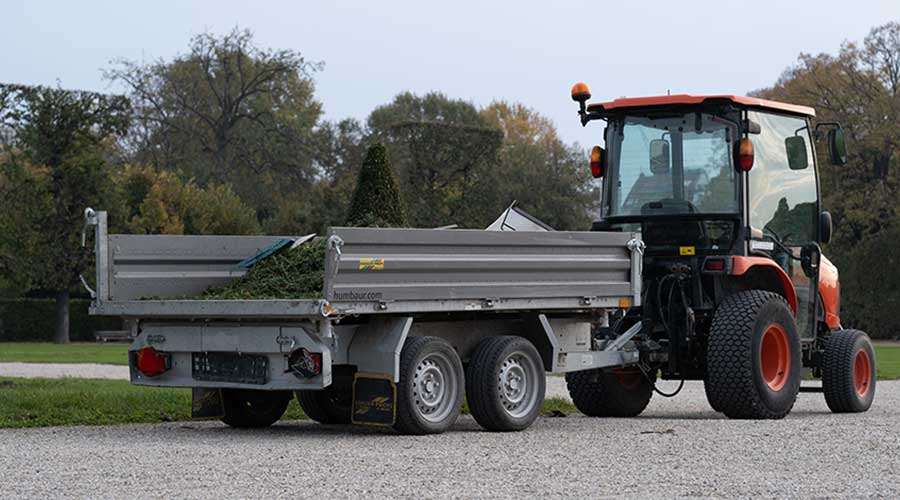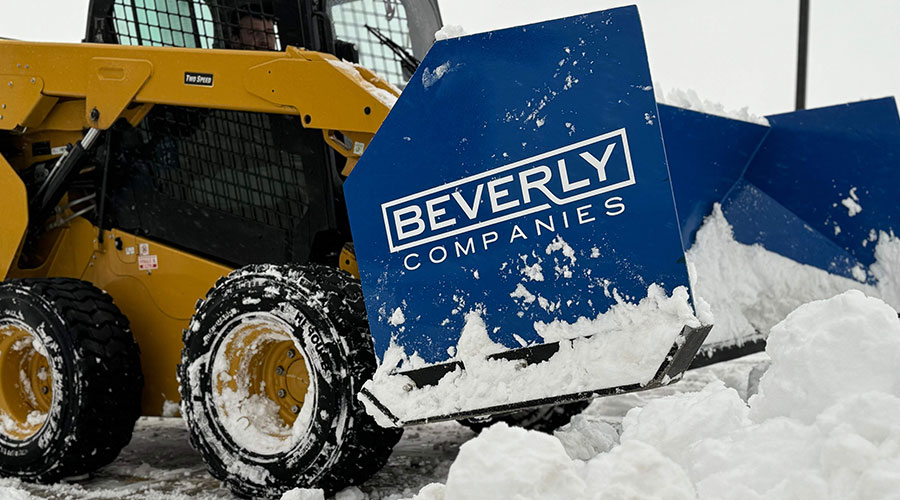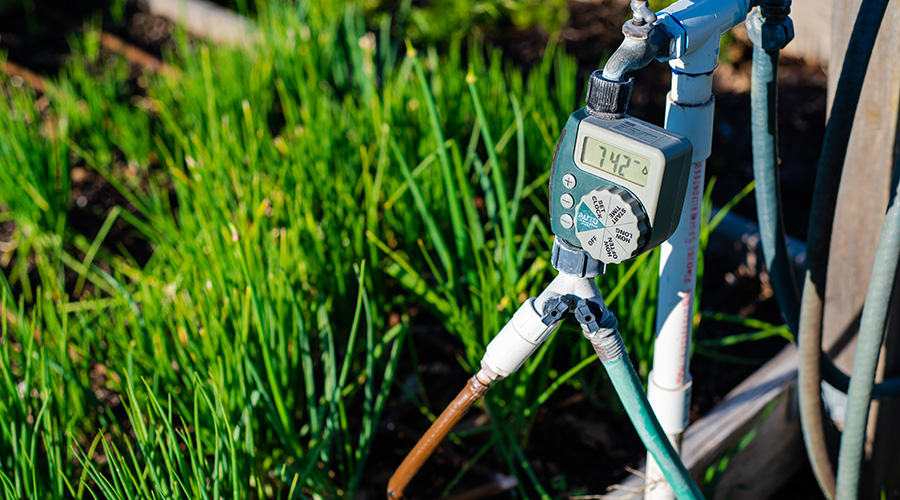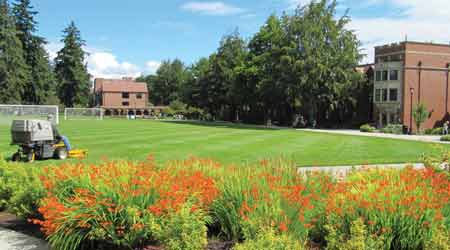 Unable to rely on strictly large trucks or cars, the University of Puget Sound utilizes utility vehicles as a mode of primary transportation.
Unable to rely on strictly large trucks or cars, the University of Puget Sound utilizes utility vehicles as a mode of primary transportation.Specifying Utility Vehicles to Meet Unique Needs
The evolving University of Puget Sound campus creates fleet management challenges and opportunities
Nothing is permanent except change, and managers in institutional and commercial facilities can attest to the truth in that adage. Some facilities can change fairly quickly as owners and occupants try to shape their surroundings to their needs. The University of Puget Sound has evolved over years as university planners have reshaped the look and feel of the campus.
“We’re tucked between two main streets, and I think they felt that some of these smaller lateral streets going through the center of campus were disruptive,” says Joe Kovolyan, the university’s manager of grounds and automotive. “So over time, they’ve been closing them off and putting up buildings.”
For Kovolyan and his staff, the nature of the campus has affected the way they maintain the campus and in particular, the vehicles the department uses to carry out its daily activities.
Campus considerations
Founded in 1888, the university sits on a 98-acre urban campus in Tacoma, Wash., that includes 136 buildings, 38 acres of lawn, and 5 acres of sidewalks. Fewer streets and more small paths around campus mean Kovolyan and his staff cannot rely on strictly large trucks or cars.
“Utility vehicles are our primary transportation for people supplies, materials and equipment, due to the lack of interior campus road access for larger vehicles,” he says. “From the grounds perspective, it makes things easier. We’re not dealing with a lot of street traffic. Accessibility for us is mainly utility vehicles, mowers, and tractors, so not having to deal with vehicular traffic makes our life easier.”
The campus’s facilities operations — grounds, building services, mechanical, electrical, plumbing, carpentry, and construction — use utility vehicles. The fleet consists of 11 electric carts, 19 golf carts or small vehicles, 11 full-size vehicles, and 38 cars, trucks, vans, tractors, and mowers. Changes in the campus have led to Kovolyan to reconfigure this fleet.
“We’ve reduced four pickups, a box truck, and two vans and replaced them with utility vehicles,” he says. “For the past seven years, we have tried to stay neutral in overall numbers, but we have reduced our vehicle numbers and replaced them with utility vehicles. Last year, we replaced seven very old golf carts with seven new utility vehicles.”
Specification issues
The university relies heavily on utility vehicles to perform daily activities, so Kovolyan is experienced in selecting the most appropriate vehicle for the application in question.
“It starts with the mechanic and I making a recommendation that a vehicle has gone beyond its useful life and get some basic info for what the shop is looking for in a new unit,” he says. “We might also demo some units. The mechanic and I will do the research on maintenance, repair, quality, etc., then get the quotes and provide our findings to the associate vice president, and he decides on those recommendations.”
The central role of the mechanic in the specification process is based on experience.
“He’s the one that’s going to maintain them, and between he and I, we keep up with what’s going on with the latest vehicle updates,” Kovolyan says. “For example, a utility vehicle might switch motors, and if it’s a motor manufacturer we’ve had issues with in the past, he can nip that in the bud. We’ve found that if we let other people get involved first, by looking at the bells and whistles and pretty pictures, it’s a much harder fight.”
At one point, the process did include more input from vehicle users.
“We ordered utility vehicles one time and let each department order,” he says. “They basically decided among themselves what they wanted added to each vehicle. We ended up with a hodgepodge of actually silly additions, which drove the cost up and made more issues. We learned from that experience. In general, we need to keep a uniformity and a streamlined procession.”
Still, Kovolyan and the department mechanic do consider the needs and request of vehicle users.
“It’s more of them giving us a wish list of what it can do and what it can hold and what it can carry, he says. “That’s about it. (The requests) vary from department to department, but dependability and enough space and size are close to the top. Towing and hauling weight run a close second. It’s also trying to change the mentality that you don’t need to carry everything all the time, just what you need for the day.”
Beyond the requests of vehicle users, specification also includes careful consideration of two issues that important to Kovolyan and the department — noise and standardization.
“Noise plays a big part in our department and is the number one consideration,” he says. “That’s why we’ve gone with the kinds of mowers we have — diesel mowers over gasoline mowers. Most of the utility vehicles are pretty quiet.”
Because the department operates such a large fleet of vehicles, buying from a small number of manufacturers helps hold down the number of spare parts the department must keep in inventory and streamlines inspection and maintenance.
“We have also tried to go from a very diverse fleet into a more streamlined system,” Kovolyan says. “At one point, we had seven manufacturers of utility vehicles, and keeping up with parts alone was an issue. We are down to four and hopefully soon three brands, with even some of those being able to share certain parts, like oil filters. This saves the university both time and money.”
Related Topics:











